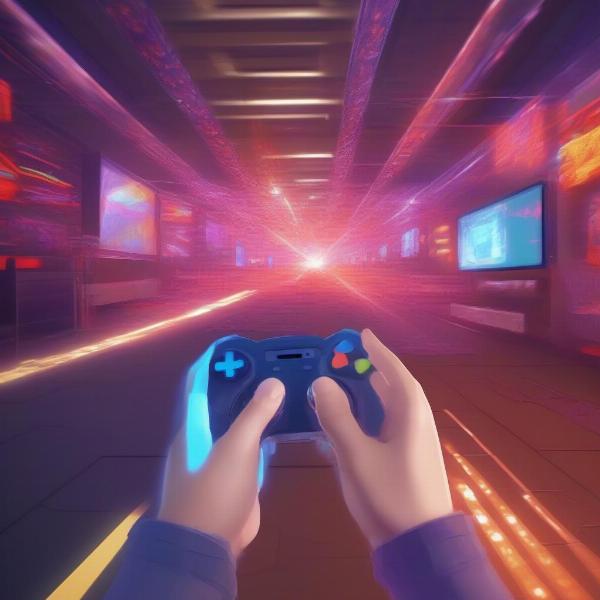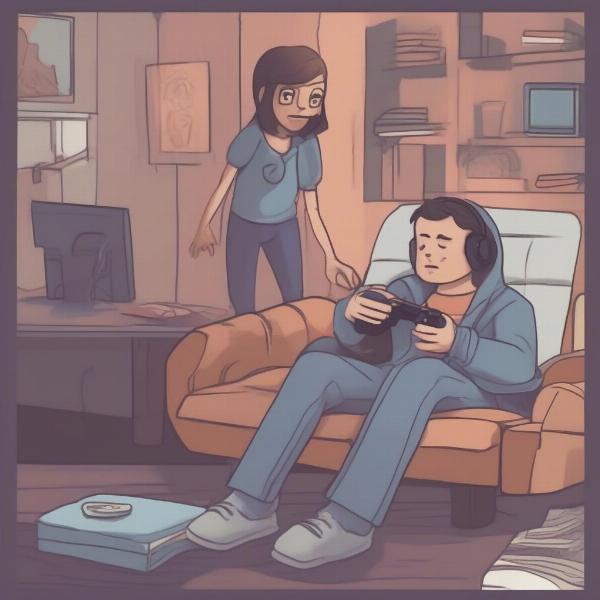Can Computer Games Cause Seizures? The flashing lights and rapidly changing scenes in video games have been linked to seizures, especially in individuals with photosensitive epilepsy. While rare, this phenomenon is a genuine concern, prompting research and precautions within the gaming community. Understanding the connection between gaming and seizures is crucial for both players and developers.
Understanding Photosensitive Epilepsy and Seizures
Photosensitive epilepsy is a type of epilepsy where seizures are triggered by flashing lights or patterns, particularly those flickering between 10 and 30 times per second. While various factors can contribute to seizures, the visual stimulation from video games can be a significant trigger for those with this condition. Not everyone with epilepsy is photosensitive, but for those who are, even everyday occurrences like sunlight flickering through trees can pose a risk.
How Video Games Can Trigger Seizures
The rapid changes in light and color, quick cuts, and flashing effects in video games can create the perfect storm for triggering seizures in susceptible individuals. These visual stimuli can overstimulate the brain, leading to abnormal electrical activity that manifests as a seizure. While the risk is relatively low, it’s important to be aware of the potential dangers, especially for those with a family history of epilepsy or seizures.
Certain game genres, like action games and first-person shooters, often utilize intense visual effects that can be more likely to trigger seizures. However, any game with flashing lights or rapidly changing patterns can pose a risk.
 Video Game Seizure Triggers: Flashing Lights and Rapid Scene Changes
Video Game Seizure Triggers: Flashing Lights and Rapid Scene Changes
Minimizing the Risk of Seizures While Gaming
Thankfully, there are several steps gamers can take to minimize their risk of seizures. Creating a safe gaming environment involves understanding your own sensitivities and adjusting your gameplay accordingly.
- Consult a doctor: If you’ve ever experienced a seizure or have a family history of epilepsy, consult with a medical professional before engaging in video games. They can provide personalized advice and assess your risk.
- Be aware of your triggers: If you’re photosensitive, be mindful of the types of games you play and the visual effects they utilize. Avoid games with excessive flashing or rapid scene changes.
- Adjust game settings: Many games offer options to adjust brightness, contrast, and other visual settings. Lowering the brightness and increasing the contrast can reduce the intensity of flashing lights.
- Take breaks: Regular breaks can help reduce eye strain and minimize the risk of seizures. Take a break every 30-60 minutes to rest your eyes and allow your brain to recover.
- Play in a well-lit room: Playing in a dimly lit room can increase the contrast between the screen and the surroundings, making flashing lights more pronounced. Play in a well-lit room to reduce this effect.
 Creating a Safe Gaming Environment for Photosensitive Individuals
Creating a Safe Gaming Environment for Photosensitive Individuals
What to Do If a Seizure Occurs While Gaming
Knowing what to do if a seizure occurs while gaming is crucial. Quick and appropriate action can help minimize harm and ensure the individual’s safety.
- Stop the game immediately: Turn off the game or cover the screen to eliminate the visual stimuli.
- Protect the individual: If possible, gently guide the person to the floor and remove any nearby objects that could cause injury.
- Do not restrain them: Do not try to restrain the person or put anything in their mouth.
- Time the seizure: Note the time the seizure began and how long it lasts.
- Seek medical attention: If the seizure lasts longer than five minutes or if it’s the person’s first seizure, call for emergency medical assistance immediately.
 Responding to a Seizure During Gameplay: Steps to Take
Responding to a Seizure During Gameplay: Steps to Take
Game Developers and Seizure Prevention
Game developers also play a crucial role in minimizing the risk of seizures. By implementing certain design considerations, they can create games that are safer for photosensitive individuals.
- Seizure warnings: Include clear and prominent seizure warnings on game packaging and during the game’s opening sequence.
- Adjustable settings: Provide options for players to adjust visual settings, such as brightness, contrast, and flashing effects.
- Reducing flashing lights: Minimize the use of flashing lights and rapid scene changes, especially those that fall within the known trigger range for photosensitive epilepsy.
- Testing and feedback: Conduct thorough testing and gather feedback from players to identify and address any potential seizure triggers.
Epilepsy and Gaming: Further Considerations
Beyond the direct link between flashing lights and seizures, there are other considerations regarding epilepsy and gaming. Stress, sleep deprivation, and certain medications can all lower the seizure threshold, making individuals more susceptible to seizures, even from triggers that might not normally affect them. Maintaining a healthy lifestyle and managing stress levels are crucial for individuals with epilepsy who enjoy gaming.
Conclusion
Can computer games cause seizures? Yes, in individuals with photosensitive epilepsy. While the risk is relatively small, the potential consequences are serious. By understanding the connection between gaming and seizures, both players and developers can take steps to create a safer and more inclusive gaming environment for everyone. By following the precautions outlined in this article and staying informed about the latest research, we can all contribute to a gaming community that prioritizes health and well-being.
FAQ
-
What is photosensitive epilepsy? Photosensitive epilepsy is a type of epilepsy where seizures are triggered by flashing lights or patterns.
-
How common is photosensitive epilepsy? Photosensitive epilepsy affects approximately 3% of people with epilepsy.
-
What are the symptoms of a seizure? Symptoms of a seizure can vary, but may include convulsions, loss of consciousness, and muscle rigidity.
-
What should I do if I experience a seizure while gaming? Stop the game immediately, protect the individual from injury, and seek medical attention if necessary.
-
How can game developers prevent seizures in their games? Developers can include seizure warnings, provide adjustable settings, and minimize the use of flashing lights.
-
Are there any specific game genres that are more likely to trigger seizures? Action games and first-person shooters often have intense visual effects that can be more likely to trigger seizures, but any game with flashing lights poses a risk.
-
Can stress and lack of sleep increase the risk of seizures? Yes, stress, sleep deprivation, and certain medications can lower the seizure threshold, making individuals more susceptible to seizures.

